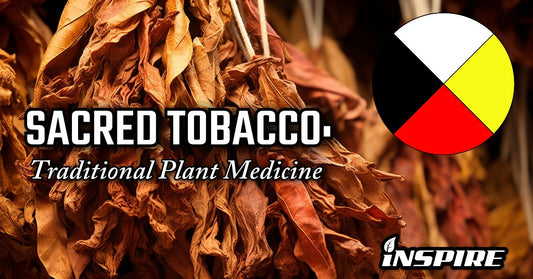Written By: Zach Champ
Connected with me on LinkedIn!
DEALING WITH THE COMMON FLU & COLD
Everyone hates getting sick with the common cold and flu. Dealing with a stuffy or a runny nose and fever is never pleasant. Having a cold or flu can take away all your energy and affect you in your daily activities. Being sick can cause you to miss work or important events with friends and family. Buying cough syrups and boxes of tissue can be an inconvenient expense, and sometimes they don’t even work at all!
WHY HERBAL REMEDIES ARE BETTER CHOICES FOR TREATING THE COLD & FLU
There are plenty of over the counter medicines available at pharmacies and drugstores that are for treating the cold and flu. More often than not these medicines are made with artificial ingredients and man-made compounds that address the symptoms caused by the common cold and flu, but which don’t actually address the bacteria and virus causing the illness. They include artificial dyes and can include ingredients such as Dextromethorphan which can cause delirium and disassociation! Who would want to experience all that when they are already sick?
In comparison, herbal remedies for the cold and flu would never do that to you! Herbal remedies and medicine have been used for thousands of years to help treat illness and heal the body. Herbal medicine is reliable, time-tested, scientifically proven, and is a great part of holistic, healthy living! Nature provides us with countless plants that can be used to heal our body, why not use them to help with our illness and ailments?
TOP 5 HERBS FOR TREATING THE COLD & FLU
There are countless herbal remedies you can use to help combat the common cold and flu. Due to the antibacterial and antiviral properties of many plants, herbal medicine and remedies may actually be the BEST way to treat the common cold and flu. We chose what we think are the top 5 herbs for treating the common cold and flu and listed them below. Check each one out and tell us what you think your most preferred herb is in the comments section below!
1. Thyme (Thymus vulgaris)
Thyme is an aromatic perennial plant that grows as a ground covering shrub. Thyme has small pink flowers that bloom during the summertime. These flowers are generally dried and used medicinally, with fresh leaves being preferred for medicinal use.

Thyme is an expectorant (loosens phlegm) that is used often to treat respiratory tract issues including whooping cough and emphysema. It is perhaps one of the most popular herbs for treating respiratory issues. Thyme contains the aromatic oils Thymol and Carvacrol which are responsible for its medicinal and healing actions.
To create a healing and soothing infusion use 2 teaspoons of dried herb per cup of boiling water. Steep the dried herb in the water for approximately 10 minutes. Drink three cups of this tea throughout the day or as needed to alleviate coughing related symptoms.
2. Ginger (Zingiber officinale)
Ginger is a tropical perennial that grows from a prized tuberous root known as a rhizome. When you see pictures of Ginger and purchase it from the store or farmer’s market you are looking at the dried rhizome of the plant which is the typically used part of the plant for herbal medicine and cooking.

Ginger has a unique, strong, and recognizable aroma. Ginger contains volatile oils such as zingiberene and oleoresins like gingerol and shogaols. The oleoresin gingerol is responsible for Ginger’s spicy, hot taste and aroma.
To make effective Ginger Tea use 2 teaspoons of powdered root for every cup of boiling water.
3. Elderberry (Sambucus nigra)
Elderberry is a tall deciduous tree that has oval leaves, with milky white flowers and dark purple berries. It is one of the most respected and historically used herbal remedies in Europe.

Elderberry contains a large host of natural constituents such as Flavanoids, phenolic acids, triterpenes, sterols, volatile oils, mucilage, and tannins. It is a natural source of cannabinoids! One of the main constituents, Sambucol, has been found to reduce the development of flu symptoms when taken regularly during wintertime. The flavonoids found in Sambucus nigra also manifest antiviral effects by binding to viral cells and inhibiting their ability to infect the body’s healthy cells. The strength of this inhibiting activity of Elderberry, especially as an extract, is comparable to some pharmaceutical antiviral drugs. This makes Elderberry a potent solution to the flu!
The dried flowers are used to make an infusion that promotes perspiration in the body, helping induce fevers to help combat the common cold and flu. The berries of Sambucus are also rich in vitamin C!
4. Echinacea- (Purple Cone Flower)
(Echinacea angustifolia and Echinacea purpurea)
Echinacea is an eye-catching, attractive perennial with purple daisy-like flowers. The most used plant parts are the dried root and flowers. These are often used to make teas, decoctions, and tinctures to help treat issues such as the common cold and flu.

Purple Cone Flower is an antibacterial that also boosts the immune system supporting overall health. Echinacea contains a variety of organic compounds that make it such a powerful herbal remedy. Cone Flower is known to contain compounds such as alkamides, caffeic acid esters, polysaccharides, volatile oils, and alkaloids like Echinolone and Betaine.
5. Mullein (Verbascum thapsus)
Mullein grows as a broad-leafed rosette with an upright stalk. The leaves are characteristically soft and fuzzy with the stalk resembling a corncob. Mullein has small five-petaled yellow flowers appearing sporadically throughout the stalk.

Mullein contains mucilage, flavonoids, triterpenoid saponins, volatile oils, and tannins. Mullein is an expectorant, and the little fuzzy hairs on the leaves are the mucilage which helps expel mucus from the throat. It combines really well with Thyme as a respiratory remedy for clearing the airways, sinuses, and throat.
An old remedy for treating cough and sore throat calls for the leaves of mullein to be boiled in milk and to drink the resulting concoction warm with honey.








